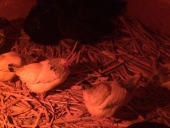Hello everyone!
I have an idea that could perhaps come out of Joel Salatin's "Everything I Want To Do Is Illegal" for several years out after I receive my Bachelor's Degree. On our property, we have a marsh surrounded by a c-shaped hillside that was formerly a shallow pond but became overtaken by the narrowleaf cattail. I was wondering if it would be a practical idea to scythe the seemingly infinite amount of brown carbonaceous matter out of that area for bedding, mulch,
compost, biochar, etc., and then place pigs in that area to uproot the cattails. Here they could produce pork while ridding the area of most cattails, and thus creating more favorable conditions to perhaps grow willows for biomass fuel and various other uses. Or perhaps I could just scythe it and use the cattail foliage for fuel and goat forage.







